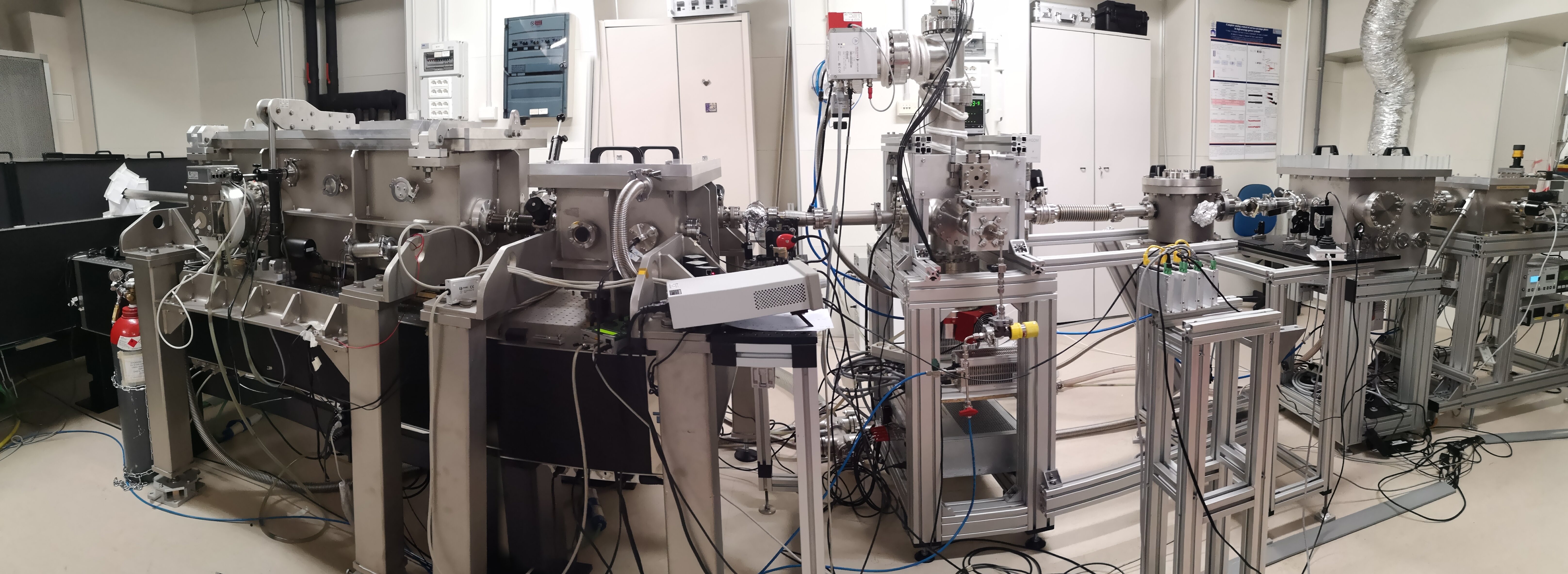In this lab we employ a XUV-IR pump-probe scheme to perform experiments with attosecond temporal resolution on solid state targets. The ultimate goal of these experiments is to widen our knowledge of strong field driven processes and coherent optical response of solid materials toward their possible exploitation in PHz electronic devices.
The experimental activity of the laboratory aims at studying ultrafast dynamics in advanced materials, mainly in solid phase, by means of spectroscopic techniques with attosecond resolution. Few-cycle optical pulses (between 4 and 7 femtoseconds in duration) in the infrared spectral region are employed to obtain pulses in the extreme ultraviolet, with a final duration of few hundred attoseconds, by exploiting the process of high-order harmonic generation in a noble gas. The XUV pulses are then combined with a portion of the driving IR pulses to perform “pump-probe” experiments with high temporal resolution by means of attosecond-resolved spectroscopic techniques. Specifically, these experiments investigate the electronic, excitonic and magnetic dynamics in advanced solids with transient reflectivity and absorption techniques with attosecond resolution. The study of such dynamics aims at resolving the fundamental physical mechanisms that govern light-matter interaction. The processes that occur in this time window are of paramount importance: indeed, they determine the subsequent development of slower dynamics (such as those dynamics involving crystal lattice deformations), thus defining the overall optical response of the system.
Accessing the phenomena occurring within the first attoseconds of light-matter interaction is therefore crucial: a thorough understanding of these phenomena would allow for the dimensioning and optimization of the exotic properties of new materials, possibly with strong implications for various fields of technology, such as electronics, spintronics, optoelectronics, the photovoltaic field, etc.) .
LASER SOURCE

BEAMLINE
The few-cycle IR pulses emerging from the hollow-core fiber compressor are focused onto a cell containing a noble gas to produce the attosecond pulses in the extreme ultraviolet spectral region (XUV). The XUV radiation is then focused by a first toroidal mirror into an interaction chamber, in which a gas-phase sample is placed. After this chamber, a second toroidal mirror collects the radiation and focuses it a second time, into another chamber: this second focus is where the radiation interacts with the solid sample, which is studied by means of transient reflectivity and absorption techniques. The first target can either be used to perform experiments in the gas phase or to calibrate the measurements performed on solid samples in the second interaction chamber. Hence, the beamline allows pulse reconstruction to be simultaneous with the experiment on the solid sample: while the pump-probe measurement is performed with attosecond time-resolution, the employed IR and XUV pulses are completely characterized.

